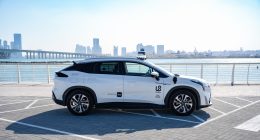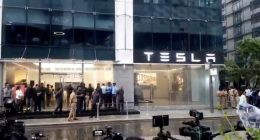According to a new interim directive from NASA, the International Space Station (ISS) will now be available for commercial use by private players as well. The same was announced by Stephanie Schierholz, NASA lead spokesperson, at a conference on Friday. By opening ISS to private companies, NASA is planning to generate revenues to power its next big space missions.
Starting today, private companies can utilize space and resources on ISS to test and market their products. Additionally, NASA announced that ISS will be open for private astronauts and tourists. The Russian side of ISS has often experimented with commercial ads, marketing and even space tourists. Dennis Tito, a US multi-millionaire, became the first space tourist on ISS in 2001 to spend eight days on Russia’s side of ISS.
Though all this comes at a hefty cost. In order to use resources and facilities on ISS, an incredibly high price is to be paid by the private company or the private astronaut. According to NASA’s commercial-use pricing policy, it will cost $11,250 per crew member per day to use regenerative life support and toilet. While food, medical kits, exercise equipment will cost $22,500 per crew member per day. Power and data downlink is priced at $42 per kWh and $50 per GB respectively.
Private astronaut missions are currently limited to only two flights per year and each astronaut can stay for no more than 30 days aboard the ISS. Also, there are restrictions on the cargo that can be sent on the ISS. It is possible for companies to send their own module to the ISS. In such cases, NASA will be providing them with a docking port on its Harmony module for a limited period of time.
By opening its doors to the private sector, NASA wishes to achieve low-Earth orbit possession by private companies. For this purpose, it has commissioned twelve companies to study how this orbit can be efficiently utilized for the use by the private industries.
As of now, it is only making available 5% of its annual allocation of resources and cargo capabilities which includes 90 hours of crew time and 175kg of cargo. But this will be limited to only one company. The allocation and prices of available resources will be assessed every six month by the agency.
The commercial activities should satisfy certain criteria in order to qualify. The activity should require the unique microgravity environment to test and develop its product. IT should have a connection to NASA’s mission. Also, it should support the development of low-Earth orbit economy. Companies can take advice from NASA astronauts regarding their activities as long as it is consistent with the government ethics on the ISS.
NASA seeks to employ a five-part-plan. The first part being initiating commercial activities on the space station and to endure competitive market. The second part being, private astronaut missions aboard the ISS according to the outlined directives for commercial and marketing activities. Setting up commercial destinations in the low-Earth orbit, with Harmony module being the first destination, is the third part of the plan. For the fourth part, NASA is working to increase the research and development of using microgravity environment for commercial activities. The final part of the plan providing a forecast of its long-term, low-Earth orbit requirements for the services when they become commercially available.
With this decision, the agency has identified long term use of low-Earth orbit as its highest priority. It also, seeks to target research in the fields of life sciences, including plant life, growth of microbes and microgravity environment. While research priority in physical sciences being combustion and energy transfer. NASA wants to focus on human research and exploration program and it hopes to finance its future missions as well as by opening its door for private sector.
NASA is currently seeking feedback from various companies to improve the effectiveness of its five-part plan.




